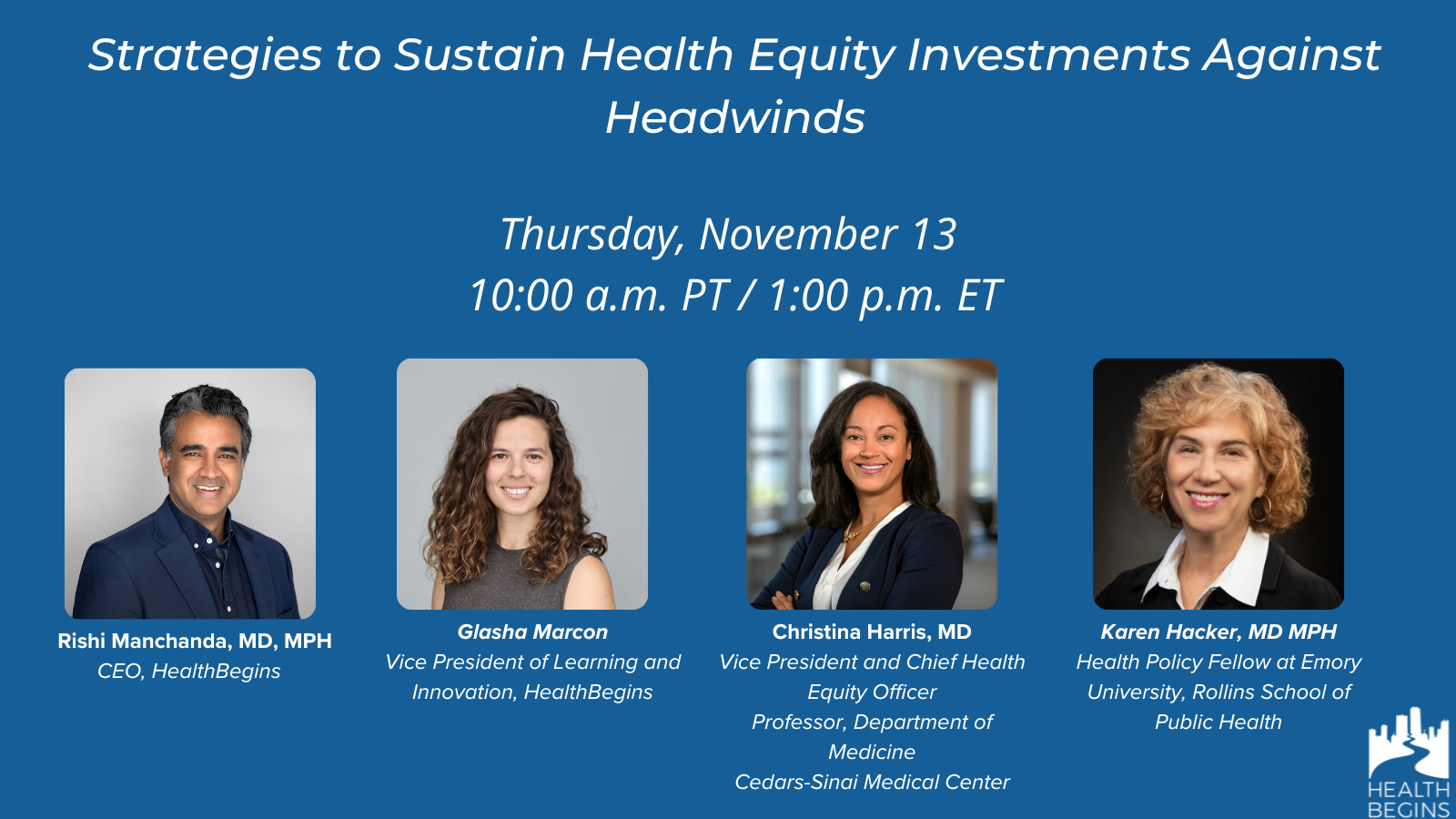Efforts to improve health equity and social and structural drivers of health equity (SDOH-E) face stronger headwinds now than they have in years. The Trump Administration’s $1 trillion in Medicaid cuts are poised to strip hospitals of essential funding and force an estimated 1 in 4 to close. Critical federal funding that underpins food assistance and other health-related social supports is dramatically shrinking. Federal language restrictions are driving health equity efforts underground.
The need for equity—and the powerful impact it makes on health care’s quadruple aim—has not changed. If anything, it is only growing greater. How can healthcare and public health leaders reimagine and retool strategies to protect and advance health equity against headwinds?
In this webinar, we hear from those doubling down on health equity investments. We identify the biggest challenges to making informed investment decisions when so much is under threat. We illustrate how to see beyond siloed funding streams to pool and align funds for collaborative financing and greater impact. And we explore how to overcome traditional healthcare financial models that are ill-suited to health equity investments.
These practices empower leaders to make the business and mission case for health equity, fund it effectively, and build coalitions of support. By learning about these practices in community with fellow leaders, we also grow the courage to use them.
Speakers:
- Rishi Manchanda, MD, MPH, CEO, HealthBegins
- Glasha Marcon, Vice President of Learning and Innovation, HealthBegins
- Christina Harris, MD, Vice President and Chief Health Equity Officer, Professor, Department of Medicine Cedars-Sinai Medical Center
- Karen Hacker, MD MPH, Health Policy Fellow at Emory University, Rollins School of Public Health, former Director, National Center for Chronic Disease Prevention and Health Promotion
Webinar Objectives:
By the end of the webinar, attendees will be able to:
-
Describe current systemic challenges to sustainable investments and financing for health equity and SDOH-E work.
-
Articulate more comprehensive approaches to financial modeling and a more compelling — and more accurate — definition of value that can help address current threats to health equity and SDOH-E investments.
- Identify at least two concrete opportunities to sustain health equity and SDOH-E investments in the current political and economic environment.
Featured Content
Building Community to Improve Maternal Health: Lessons from Group Prenatal Care
HealthBegins supported health centers across the country to find new ways to make maternal health more equitable and effective. The solution was Group Prenatal Care—a means of fostering community as part of the care—and the outcome was nothing short of inspiring.
Aligning Our Organizational Structure with Our Values
With our new B Corp Certification, HealthBegins has now joined a global network of companies that see business as a force for good and can share tools and practices to help us improve.
5 Principles and Practices to Sustain Gender-Affirming Care in Uncertain Times
With the onslaught of federal threats to transgender and nonbinary people, health care has a critical role to play to uphold standards of care, ensure access to essential services, advocate for evidence-based medicine, and protect patients and providers.




